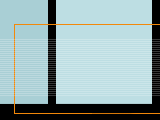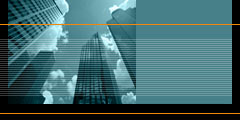



Dr. Berkowitz provides a comprehensive range of expert services in transportation and traffic engineering. Dr. Berkowitz has become a significant provider of litigation support through his experience and knowledge of codes, standards and practices. Typical services include: • Comprehensive litigation support, depositions, affidavits, interrogatories, courtroom testimony, inspections, expert reports, literature review, advising on industry practices and standard of care, performing review of other expert reports, help with case preparation, forming opinions on the technical merit of the case, and serving plaintiff and defense causes • Incident investigation, hazard and causation analysis, error and safety analysis, and risk based inspection programs; evaluation and study report • Industry and government rules, regulations, guidelines, controls, policies, procedures and standards • Pedestrian/passenger injuries and fatalities (trains, light rail, streetcars, buses, ferries, bicycles, walkways, roadways and terminals) • Americans with Disabilities Act, OSHA and FELA • Employee training and supervision (job duties, rules, occupational safety, regulations, reasonable conduct and safety culture) • Organization design, management failures and management system audits • Accessibility and safety for people with special needs • Subway, commuter rail, Amtrak, light rail and bus accident investigations and analysis • Platform falls, platform crowding, platform gaps, door incidents, train/bus jerk falls, on train/bus falls, between train falls and off train falls • Vehicle (train, light rail, bus, motor vehicle, commercial vehicle) investigation, including: speed, time, emergency braking, response time, stopping distance, line of sight, information downloads, and black box • Terminals - intermodal, multimodal, freight, warehouse, distribution, container, truck stops, depot, passenger, rail freight and marine • Railroad-highway grade crossings, railroad-pedestrian grade crossings and pedestrian-roadway crossings • Railroad right of way - trespass, young people, information systems, collisions, suicide, accidental falls, retrieving property and intrusion detection • Slips, trips, missteps, scuffs and falls (walkways, pathways, ramps, stairs, escalators, elevators, people movers, and heights) • Same level falls (water, ice, snow, contaminants and slippery surfaces) abrupt changes in walkway, holes and depressions in walking surface • Falls from heights (stairs, ladders, loading docks, retaining walls and platforms) • Stair design (riser, tread and width) • Human factors in pedestrian and vehicle interactions (errors, ergonomics, performance, perception-response, attention, reaction time, response time, design and fatigue) • Vehicle operator/driver (train, light rail, bus, motor vehicle, commercial vehicle) hiring practices, training, human errors, ergonomics, performance, reaction-response time, attention, fatigue, accident causations, compliance, environmental issues and reasonable conduct • Lighting, visibility, line of sight and conspicuity • Bus accidents (bus stop access, walking path, bus stop design, boarding, alighting, non-collision, pedestrian, passenger, turning, intersection, operator, training, human factors, rule compliance, best practices, data collection/safety reporting and preventable) • Bus stops, bus shelters, bus terminals, bus access (passengers and school children) • Student safety (bus stops, parking lot, loading and unloading school buses, safe walking path, traffic control and management, personnel training, assessment, safety and security) • Manual on Uniform Traffic Control Devices (latest edition) • Geometric design, level of service, and capacity factors of highways and streets (designing to standards) • Information technology, signage, communication systems and wayfinding • Work zone and workplace safety (pedestrians, vehicles and workers) • Parking facilities (design, operation, access and wayfinding) • Safety, security and reliability (identify, evaluate and eliminate hazards) • Walking and traction audit (surface requirements, maintenance procedures, slip resistance testing and coefficient of friction) • Traffic regulations and controls (incidents, warnings, signs, markings, signals and access) • Research applicable codes, guidelines and standards |
